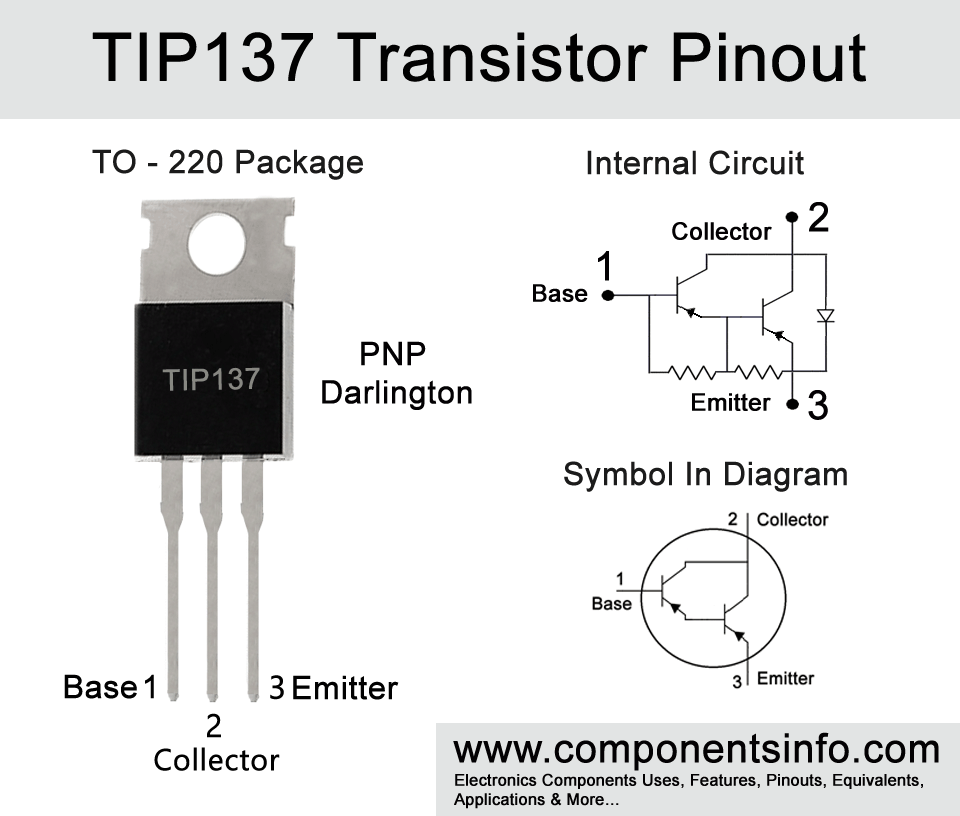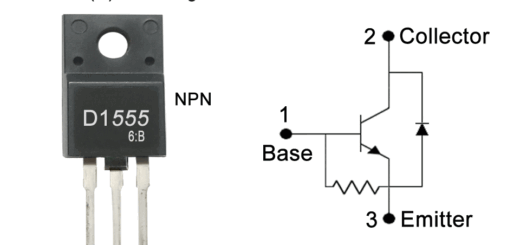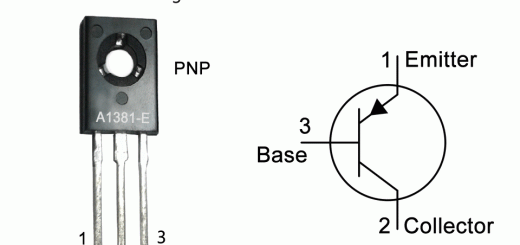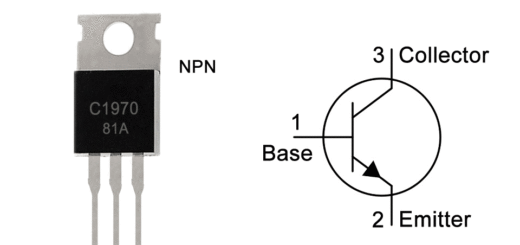TIP137 Transistor Pinout, Features, Equivalents, Application and Specs
The TIP137 is a PNP Darlington Power transistor available in TO-220 package. The transistor is designed for low speed switching and general purpose amp applications. This post provides complete information on TIP137 transistor pinout, applications, equivalents and electrical characteristics.
Understanding the Darlington Transistor
A darlington transistor is a transistor which contains two transistors inside that are connected in such a special way that increases its gain to great extent. Actually, what happens inside is that the current first amplified by the first transistor to some extent and then this amplified current goes in the second transistor where it further amplified to a great extent and as a result the overall gain of the transistor goes from hundreds or even thousand times more as compare to the actual signal. The darlington transistor is mostly used where you have a very tiny signal on which a BJT is not working.
Pin Configuration
As mentioned above the transistor is available in TO-220 package. As shown in the TIP137 transistor pinout image below:
- Pin1 is the Base pin: With the help of the base pin we can control how much current we want to flow between collector and emitter.
- Pin2 is the Collector pin: The collector pin is always the main current input, in PNP transistor current enters from the positive rail to the load and through load it enters in the transistor.
- Pin3 is the Emitter pin: The current flows from collector to emitter inside the transistor and then goes to ground (or negative terminal) through the emitter pin, completing the circuit – but only if you have allowed it through the base pin by providing it with the desired current to get the desired output current, because you can increase the large amount of output current by increasing the small amount of current at the base pin.
Here are the features and specifications of the transistor:
- Package Type: TO-220
- Transistor Type: PNP Darlington
- Max Collector Current(IC): -8A
- Peak Collector Current(ICM): -8A:
- Max Collector-Emitter Voltage (VCEO): -100V
- Max Collector-Base Voltage (VCBO): -100V
- Max Emitter-Base Voltage (VEBO): -5V
- Continuous Base Current(IB):
- Max Collector Power Dissipation (Pc): 70 Watt
- Minimum DC Current Gain (hFE): 1000 to 15,000
- Max Storage & Operating temperature: -65 to +150 Centigrade
TIP137 NPN Complementary Transistor:
NPN Complementary of TIP137 is TIP132. Both transistors can be used as a complimentary pair in many applications, such as audio amplifier output stages, drivers etc.
Replacement & Equivalent
MJW3281A, 2SC4468, 2SC3519/A, 2SC3855, 2SC3284, 2SC2581, 2SC6011A/O/P/Y, 2SC2579, 2SC3854, 2SC2580, 2SD1524, 2SD1522, 2SC4434, 2SC4275, 2SC3855, 2SC3054, 2SC2723.
Advantages & Disadvantages Of Using TIP317
Here we are pointing advantages and disadvantages of Selecting TIP137 in your project or applications so you can make a informed decision when choosing this transistor.
Advantages:
High DC Current Gain: One of the main capability of the transistor is its DC current gain of 1000 to 15000. That mean you need very small amount of current to control large current at collector.
Low Saturation Voltage: The maximum low saturation voltage is only -2V. This ensures minimum power loss and limited heat generation.
High Collector-Emitter Voltage: The high collector-emitter voltage make it useful for high voltage circuits.
Versatility: TIP137 is also a general purpose amplifier transistor and can also be used in low-speed switching these features makes it an ideal transistor for wide variety of general purpose amplifiers and normal speed switching circuits.
Disadvantages:
Slow Switching Speed: Due to the usage of two transistors inside a darlington transistor they have usually slow switching speed, therefore, then cannot be used in applications where high speed switching is required.
High Base-Emitter Voltage: The base-emitter voltage of -2.5V makes it unsuitable to use at the output of microcontrollers.
Proper heat handling required:
By looking at the datasheet we understand that on 4A current load it will generate 8W of heat due to which it requires a proper heatsinking to perform well.
TIP137 Applications
Motor Drivers
Audio Amplifiers and Preamplifiers
Low Speed Switching
Conclusion
We have come to a conclusion that TIP137 is a good general purpose transistor and can be used in wide variety of applications. So if you are looking for a general purpose transistor then TIP137 might be a good choice.
Datasheet:
To download the datasheet just copy and paste the below link in your browser.
https://www.alldatasheet.com/datasheet-pdf/view/173841/ONSEMI/TIP137.html



